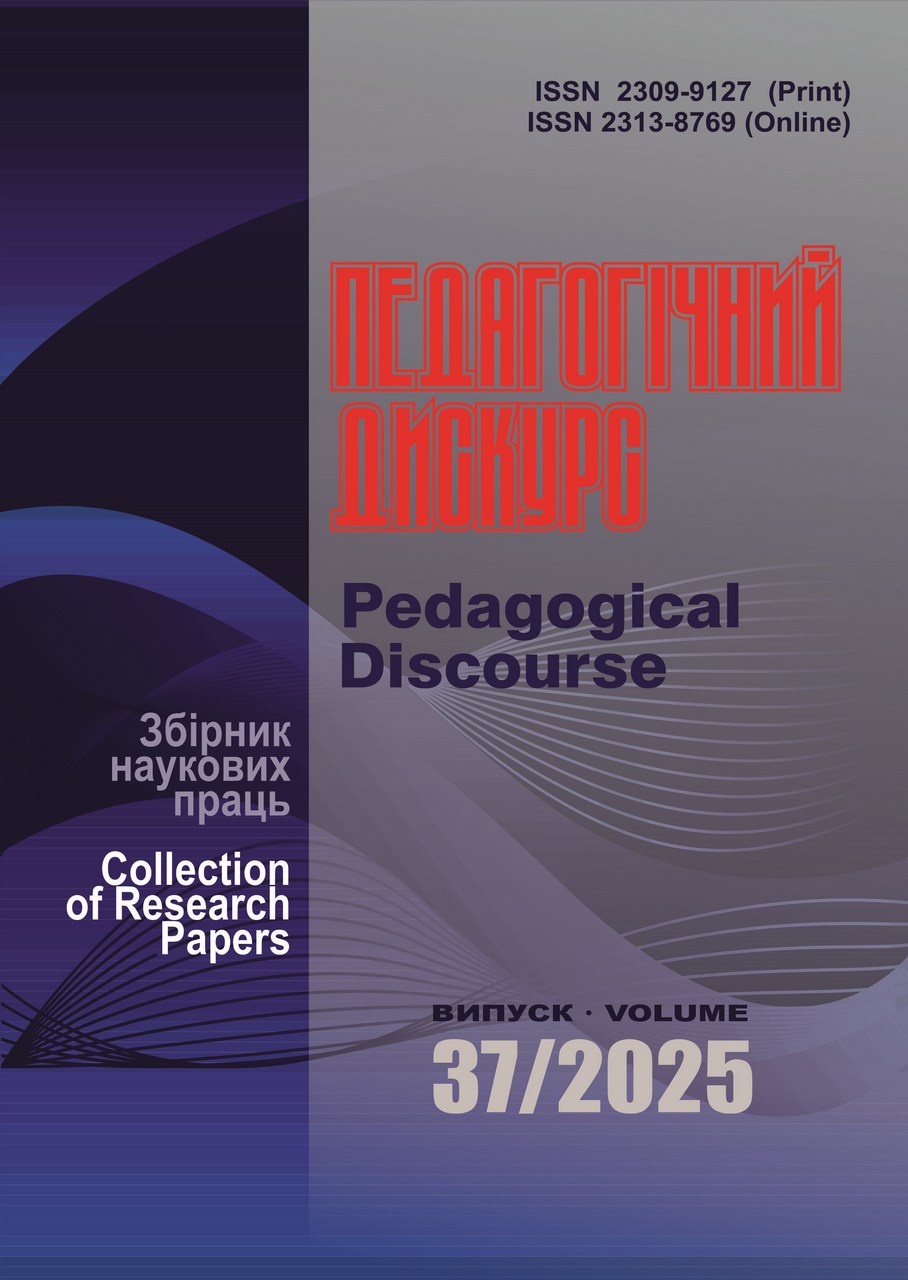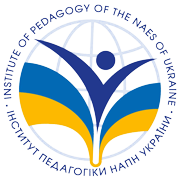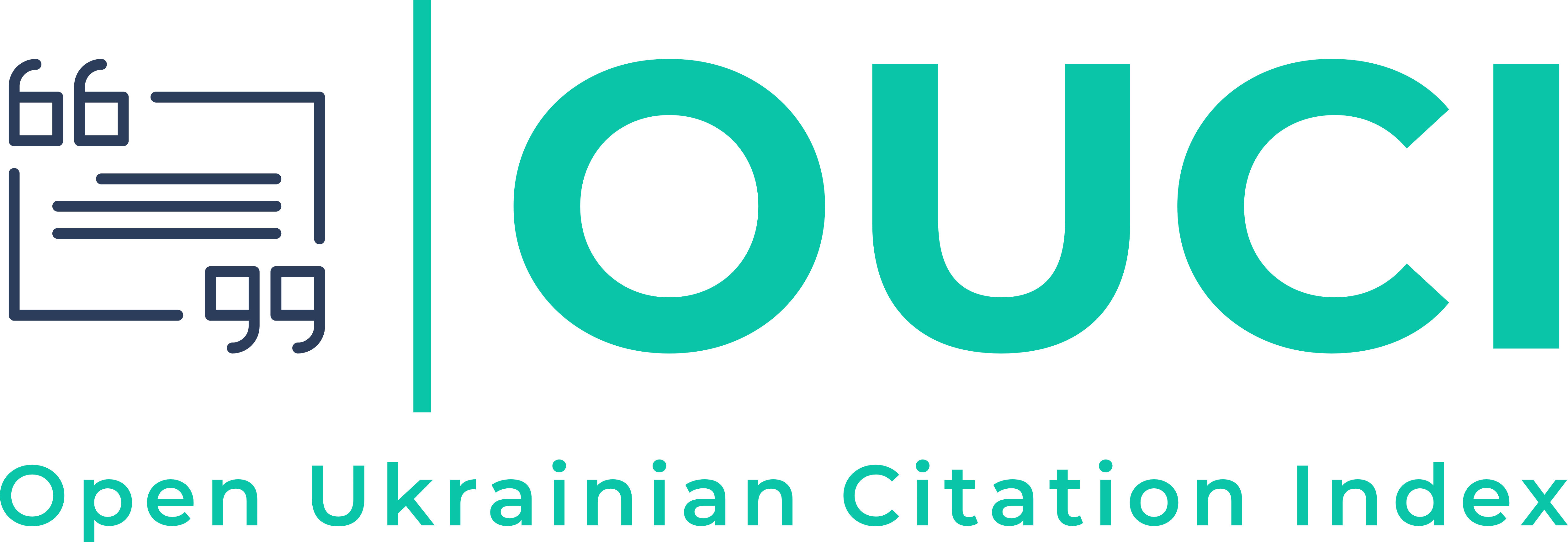Modernizing Foreign Language Training for Future Teachers through the Use of Gamified Learning
Abstract
This article investigates the effectiveness of gamification as an innovative approach within the educational process of higher pedagogical institutions, specifically focusing on its application in teaching foreign languages to future educators. The study provides a comprehensive review of both national and international scholarly works on gamification in higher education.
In the study, we used a number of general scientific methods: analysis, synthesis, comparison, induction, deduction, generalisation, which contributed to a thorough study and analysis of the essence of gamification and the formulation of conclusions. Problem-solving methods made it possible to find out ways to implement game technologies in the process of teaching foreign languages in higher education.
The authors analyze the concept of «gamification», defined as the use of game elements in non-game contexts, and substantiate the psychological and neurobiological mechanisms of its influence on students' cognitive interest, motivation, and brain functions. The role of gamification in activating the reward system and releasing dopamine, as well as its positive impact on cortisol levels, a stress hormone that improves attention and memory, is highlighted. The theoretical foundations of gamification are further explained by combining the ‘flow’ theory of Mihaly Csikszentmihalyi, behaviorist theories and self-determination theory. The key aspects of gamification, such as dynamics, mechanics, aesthetics and social interaction, were outlined in conjunction with its basic principles.
Examples of available educational platforms, websites and applications, virtual/augmented reality technologies and artificial intelligence tools that facilitate gamified foreign language learning were analyze. It was emphasized that gamification modernizes the process of acquiring communicative competence in a foreign language, promotes intrinsic motivation, enhances engagement, improves learning outcomes and provides satisfaction from personal progress, thereby optimizing the interaction of all participants in the educational process. It was concluded that the introduction of gamification in foreign language teaching in pedagogical higher education institution is not just an innovation, but a strategic step towards the formation of a new generation of competent, motivated and adaptive educators capable of teaching languages effectively in the 21st century.
Downloads
References
Водянка, Л. Д., Паламарюк, А. С. (2023). Практика застосування гейміфікації в HR. Ефективна економіка, 3. [in Ukrainian]
Казарян, С. (2023). Як гейміфікація проникла в усі сфери нашого життя. Взято з https://telegraf.design/yak-gejmifikatsiya-pronykla-v-usi-sfery-nashogo-zhyttya/ [in Ukrainian]
Коваленко, О. О., Паламарчук, Є. А. (2023). Моделі гейміфікації в системах управління навчанням. (Монографія). Вінниця. [in Ukrainian]
Ткаченко, О. (2015). Гейміфікація освіти: формальний і неформальний простір. Актуальні питання гуманітарних наук, 11, 303–309. [in Ukrainian]
Chen, X., Siau, K., Nah, F. (2012). Empirical Comparison of 3-D Virtual World and Face-to-face Classroom for Higher Education. Journal of Database Management, 23 (3), 30–49. [in English]
Cheong, C., Filippou, J., & Cheong, F. (2014). Towards the gamification of learning: Investigating student perceptions of game elements. Journal of Information Systems Education, 25 (3), 233– 244. [in English]
Csikszentmihalyi, M. (2008). Flow: the psychology of optimal experience (1st ed.). New York: HarperCollins Publisher. [in English]
Deci, E. L., Ryan, R. M. (2008). Self-Determination Theory: A macrotheory of human motivation, development, and health. Canadian Psychology/Psychologie Canadienne, 49, 182–185. Retrieved from https://www.jta.com.ua/knowledge-base/yak-zastosovuvaty-heymifikatsiiu-u-navchalnomu-protsesi/ [in English]
Deterding, S. (2014). Eudaimonic design, or : Six invitations to rethink gamification. Rethinking Gamification, 305–323. [in English]
Deterding, S. (2015). The lens of intrinsic skill atoms: A method for gameful design. Human-Computer Interaction, 30 (3–4), 294–335. Retrieved from https://doi.org/10.1080/07370024.2014.993471 [in English]
Deterding, S., Dixon, D., Khaled, L. (2011a). From game design elements to gamefulness: Defining gamification. Proceedings of the 15th international academic MindTrek conference: Envisioning future media environments, 4, 9–15. [in English]
Dichev, C. Dicheva, D. (2017). Gamifying education: What is known, what is believed, and what remains uncertain: A critical review. International Journal of Educational Technology in Higher Education, 14 (1), 1–36. Retrieved from https://doi.org/10.1186/s41239-017-0042-5 [in English]
EVIVVE (2025). Beyond Points and Badges: The Neuroscience of Effective Gamified Learning. Retrieved from https://evivve.com/beyond-points-and-badges-the-neuroscience-of-effective-gamified-learning/ [in English]
Hamari, J., Koivisto, J., & Sarsa, H. (2014). Does gamification work? A literature review of empirical studies on gamification. 47th Hawaii International Conference on System Sciences, 3025–3034. Retrieved from https://doi.org/10.1109/HICSS.2014.377. [in English]
Kapp, K. M. (2012). The gamification of learning and instruction: Game-based methods and strategies for training and education. San Francisko, CA: Pfeiffer/Wiley. [in English]
Pelling, N. (2015). Gamification past and present. GWC14. Retrieved from http://www.youtube.com/watch?v=XZ4AbQvUGho [in English]
Ryan, R., & Deci, E. (2000). Intrinsic and extrinsic motivations: Classic definitions and new directions. Contemporary Educational Psychology, 25, 54–67. [in English]
Ryan, R. M., Deci, E.L. (2017). Self-determination theory: Basic Psychological Needs in Motivation Development and Wellness. New York, CA: Pfeiffer/Wiley. [in English]
Sailer, M., Henseb, J. U., Mayr, S. K., Mandl, H. (2017). How gamification motivates: An experimental study of the effects of specific game design elements on psychological need satisfaction. Computers in Human Behavior, 69 (2), 371 – 380. [in English]
Skinner, B. F. (1953). Science and human behavior. Macmillan. [in English]
Schultz, W. (2006). Behavioral theories and the neurophysiology of reward. Annual Review Psychology, 57, 87–115. [in English]
Thorndike, Ed. L. (1962). Psychology and the science of education: selected writings. New York: Bureau of Publications, Columbia University. [in English]
Werbach, K., Hunter, D. (2012). For the Win: How game thinking can revolutionize your business. Wharton Digital Press. [in English]
Zicherman, G., Cunningham, K. (2011). Gamification by Design: Implementing Game Mechanics in Web and Mibile Apps. Sebastopol, California: O‘Reilly Media. [in English]
Copyright (c) 2025 Pedagogical Discourse

This work is licensed under a Creative Commons Attribution-NonCommercial-ShareAlike 4.0 International License.

















